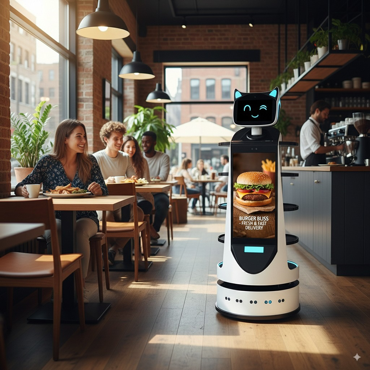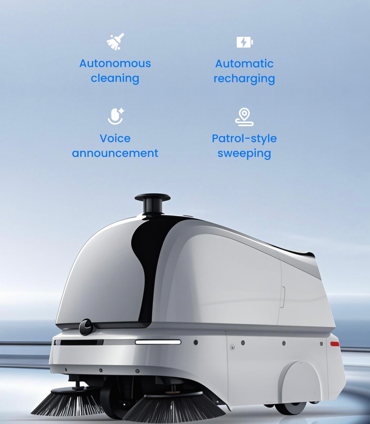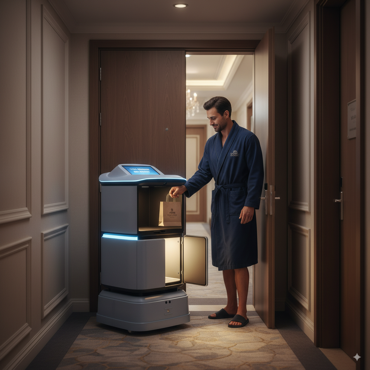Introduction
2025 is shaping up to be a landmark year for robotics and automation. Robots are becoming smarter, cheaper, and more accessible across industries — from warehouses and hospitals to hotels and supermarkets. Advances in AI, humanoid development, and new business models like Robots-as-a-Service (RaaS) are making robotics a mainstream operational tool rather than a futuristic novelty. This article highlights the ten most important trends every operations leader should watch this year.
1. AI-Powered Robots
Artificial intelligence is at the core of the robotics revolution. In 2025, robots are increasingly able to recognize objects, optimize workflows, and adapt to new environments using onboard AI. Expect robots that can “learn” from previous tasks and continuously improve accuracy and efficiency.
2. Collaborative Robots (Cobots)
Cobots are designed to work safely alongside humans. Their adoption is spreading beyond factories to offices, labs, and even hospitality. With built-in safety systems and intuitive programming, cobots are ideal for repetitive but variable tasks where human oversight is still valuable.
3. Autonomous Mobile Robots (AMRs) in Logistics
AMRs are becoming the backbone of warehouses and logistics centers. They move goods, restock shelves, and even deliver items to customers within hotels and hospitals. By 2025, AMRs will become smarter and more affordable, driving broader adoption.
4. Humanoid Robots
While still emerging, humanoid robots are attracting major R\&D investment. Their human-like form makes them ideal for environments designed around people. In 2025, pilots will appear in logistics, elder care, and hospitality — handling simple but repetitive tasks such as moving packages or assisting guests.

5. Sustainability and Energy Efficiency
Green robotics is a growing trend. Robots are being designed to use less power, recycle cleaning water, and reduce material waste in manufacturing. As sustainability becomes a procurement priority, energy-efficient robots will gain an edge.
6. Robots-as-a-Service (RaaS)
Instead of buying robots outright, many businesses now lease them through RaaS models. This reduces upfront costs and makes automation accessible to smaller companies. In 2025, expect RaaS offerings to grow rapidly in cleaning, delivery, and retail robotics.
Ready to explore RaaS solutions? Contact Xyser Robotics today to see how subscription-based robots can fit your budget.
7. Labor Shortage Solutions
Global labor shortages are pushing companies to adopt robotics. Robots are taking on “dirty, dull, and dangerous” tasks such as cleaning, inventory scans, and delivery. This frees up human staff for higher-value work, especially in hospitality and healthcare.
8. Digital Twins and Simulation
Robotic digital twins — virtual models that simulate real-world environments — are speeding up deployments. Companies can now train robots in simulation before rolling them out physically, cutting commissioning time and improving reliability.
9. Expanded Service Robots
From hotels to hospitals, service robots are no longer niche. Cleaning robots, delivery bots, and robotic concierges are entering mainstream use. The retail sector is particularly active, with supermarkets testing robots for shelf scanning and restocking.
10. Connectivity and 5G Integration
Robots in 2025 will increasingly rely on 5G and edge computing. This allows fleets of robots to communicate in real time, share data, and coordinate tasks. For logistics and hospitality, this means seamless multi-robot operations with higher uptime.
Conclusion
From AI-powered intelligence to RaaS and humanoids, 2025 is the year robotics will scale across industries. Early adopters will gain competitive advantages in efficiency, cost savings, and customer experience. Businesses that start pilots now will be positioned to lead as automation becomes the norm.
Want to stay ahead of the robotics curve? Contact Xyser Robotics to schedule a consultation and explore custom solutions for your business.
Editor Notes
Verify latest industry statistics (e.g., IFR robot sales numbers).
Replace placeholders with Xyser product names/models where relevant.
Check image rights and ensure alt text includes primary keywords.
Ensure SEO description is under 155 characters.
Review compliance notes for regional regulations (e.g., workplace safety).





